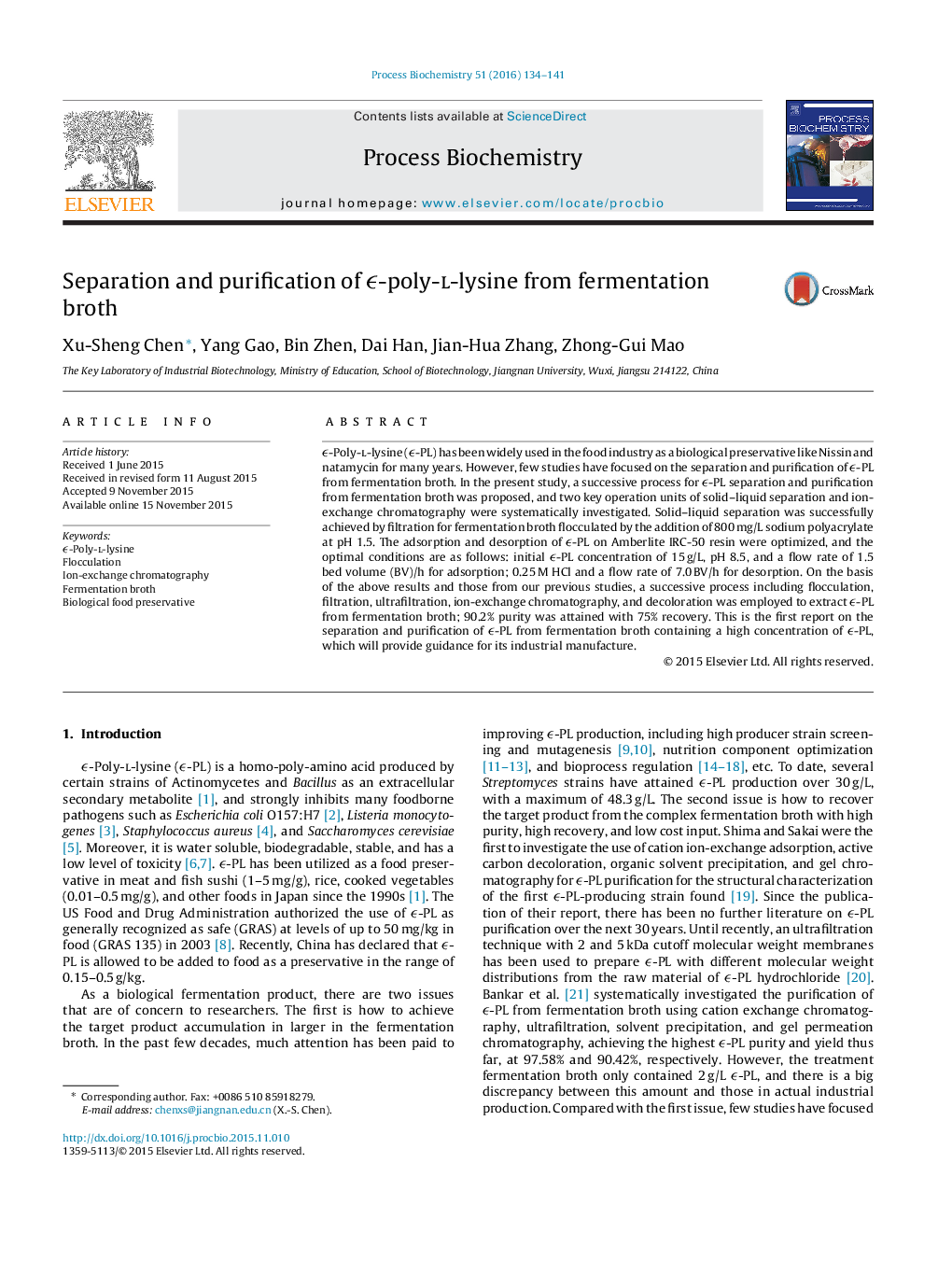| Article ID | Journal | Published Year | Pages | File Type |
|---|---|---|---|---|
| 34246 | Process Biochemistry | 2016 | 8 Pages |
ϵ-Poly-l-lysine (ϵ-PL) has been widely used in the food industry as a biological preservative like Nissin and natamycin for many years. However, few studies have focused on the separation and purification of ϵ-PL from fermentation broth. In the present study, a successive process for ϵ-PL separation and purification from fermentation broth was proposed, and two key operation units of solid–liquid separation and ion-exchange chromatography were systematically investigated. Solid–liquid separation was successfully achieved by filtration for fermentation broth flocculated by the addition of 800 mg/L sodium polyacrylate at pH 1.5. The adsorption and desorption of ϵ-PL on Amberlite IRC-50 resin were optimized, and the optimal conditions are as follows: initial ϵ-PL concentration of 15 g/L, pH 8.5, and a flow rate of 1.5 bed volume (BV)/h for adsorption; 0.25 M HCl and a flow rate of 7.0 BV/h for desorption. On the basis of the above results and those from our previous studies, a successive process including flocculation, filtration, ultrafiltration, ion-exchange chromatography, and decoloration was employed to extract ϵ-PL from fermentation broth; 90.2% purity was attained with 75% recovery. This is the first report on the separation and purification of ϵ-PL from fermentation broth containing a high concentration of ϵ-PL, which will provide guidance for its industrial manufacture.
Graphical abstractHighlights•ϵ-PL was purified from high ϵ-PL content fermentation broth for the first time.•Flocculation and filtration achieved the solid–liquid separation of broth.•A successive process for ϵ-PL purification from broth was developed.•The proposed strategy attained 90.2% ϵ-PL purity with 75% recovery ratio.•The strategy has a great potential application in industrial ϵ-PL production.Figure optionsDownload full-size imageDownload as PowerPoint slide
